“Think Outside the Plate” Feeding Therapy Techniques
Posted by Debra C. Lowsky, MS, CCC-SLP on 15th Nov 2015
Kids naturally like to discover and learn new things - that’s why they break things, take them apart, get into trouble, etc. - it’s all a part of the learning experience.
But when it comes to feeding/eating, sometimes kids get stuck. For one reason or another they stop trying new foods and exploring different textures. When this happens, one of the best things I can recommend is to “think outside the plate.”
.
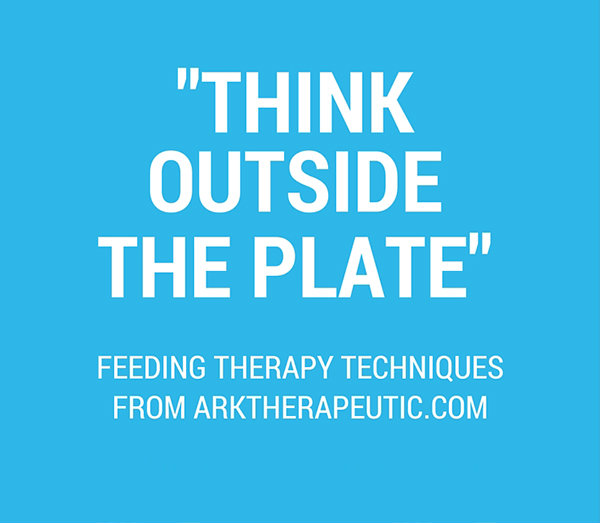
.
When something’s not working, try switching things up! Tap into the child’s inquisitive and playful nature to help them get unstuck and back to the discovery process.
The element of surprise will be your friend here, as it will spark newness and interest and may help kids see food in a new, fun light.
Below are some examples/anecdotes of how I’ve personally “thought outside of the plate:”
.
DON’T WORRY ABOUT BEING ‘PROPER’
If a child refuses to use a spoon to eat, use something other than a spoon. This might mean dipping a Grabber or Y-Chew into food, or letting them use their fingers, etc. In the feeding session pictured below, for instance, this child’s favorite spoon was at home and he didn’t like any of the other spoons I had. So, I decided to try a twizzler instead and voila! He ate the entire container of food. From there I presented the maroon spoon which is the same color, and he accepted it. Moral of the story: use whatever you can for now to get the child to eat. Using the proper utensils can come later.
.
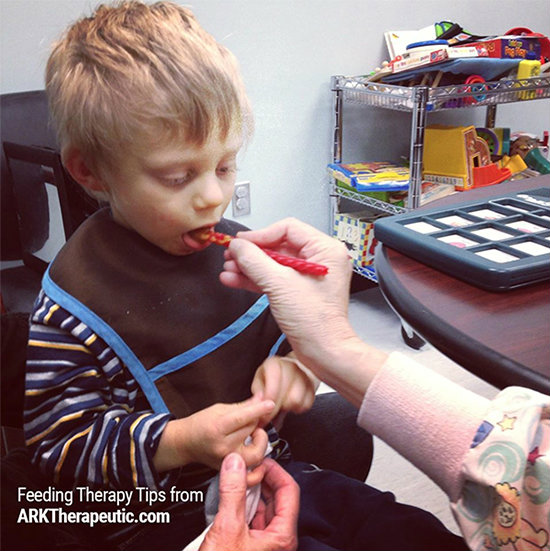
.
SWITCH UP THE PRESENTATION
In the picture below, this little guy wasn't having cups, at all. So I put a little bit of his favorite food just inside the rim of this cup, and voila, he ate from the cup. We still have some work to do, but this is a step towards making him more comfortable with cups. We'll also incorporate them into play therapy as well. For more ideas on how to de-sensitize kids to cups/straws/spoons/etc, click here.
.
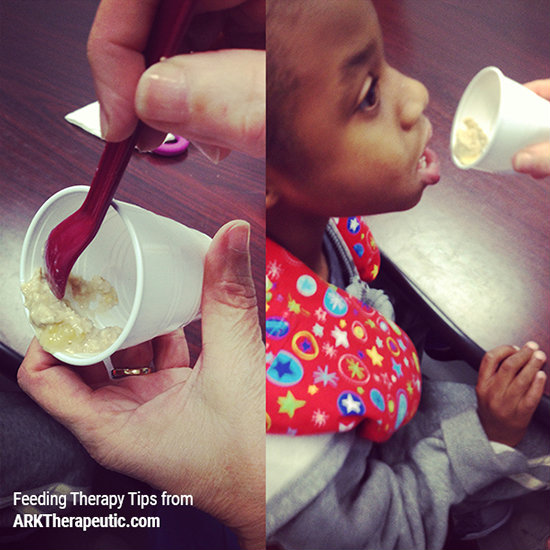
.
USE THE CHILD’S INTERESTS
I started seeing a 5-year-old child who had severe food aversions. So before going to the kitchen we did some sensory play first, exploring different textured beads, sand, etc. In the same room I had a sensory board on the wall with panels of various textures (DIY post on this coming soon). Of all of the textures and toys in the room, she was particularly drawn to a small chalkboard, and actually picked up a piece of chalk and starting drawing on it.
We went to the kitchen afterwards, but nothing was working - she wouldn’t try or touch anything. Then I had an “aha” moment. So I left her with mom, went and grabbed the small chalkboard, brought it into the kitchen, thoroughly scrubbed it, and placed it in front of her. Then I turned a yogurt container upside down and plopped all of the yogurt right on the chalkboard (which she thought was a hoot). I took my finger and showed her that she could draw with the yogurt on the chalkboard. She put her hand right in the yogurt and starting drawing with it, and then immediately put a finger into her mouth to taste some of the yogurt. Mom and I both cried (tears of joy), because that was the first time she ever tasted food herself.
.
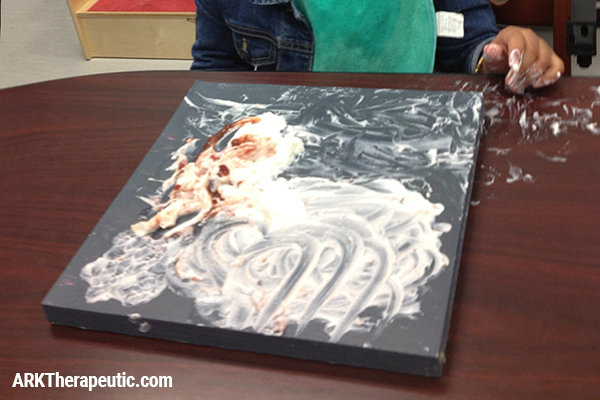
.
So, if a child is showing interest in something, see if you can use it to your and the child’s advantage. If they have a favorite doll, see if they will “feed” the doll or if the doll will "feed" them. And so forth.
.
USE STEPPING STONES
If a child won’t directly play or touch a food, see if they will use another food as a tool to do so. For instance, veggie sticks are hollow in the center so they’re lots of fun and perfect for blowing through. Use one to demonstrate blowing other foods across the table. Make it a game and see if the child will play with you. You can also put a little bit of orange juice on a plate and blow to make it wiggle. Or you could use a carrot to poke the food and push it around. Or use a piece of broccoli as a “paintbrush” with yogurt/applesauce/etc. as the “paint.” The sky is the limit.
.
TRY FREEZING THINGS
Cold enhances sensation, which means it’s particularly helpful for children with limited oral awareness. With this in mind I decided to put some jello inside of the Bite Tube Tips (as pictured below) and freeze them. The next day I used it with one of my kiddos - I let him mouth it, rubbed his gums with it, and rolled it up and down over his lips for added input. We also used it to practice biting and chewing skills, which was particularly useful because when he bit down, some of the frozen jello released to help him ‘get’ the concept of needing to bite/chew to eat. You can do this with milk, juice, pureés, etc.
.
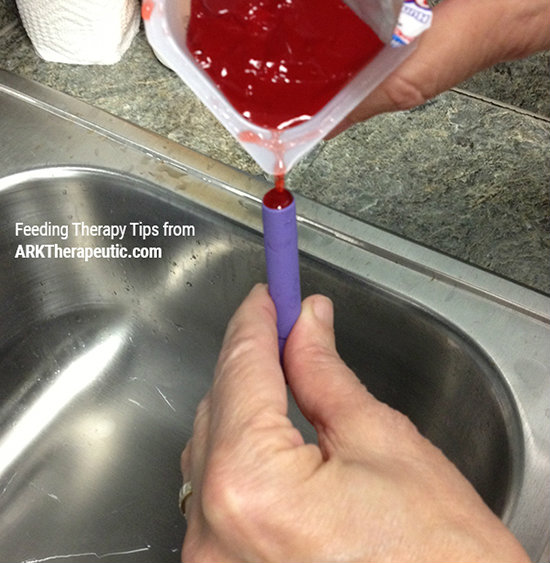
.
USE REVERSE PSYCHOLOGY
Put food on the child’s plate and tell him or her not to eat it: “I’m going to put this on your plate but I don’t want you to eat it.” It’s very simple, but has worked for me many times - they actually take a bite! Then I’ll say “oh you weren’t supposed to eat that! Oh goodness!” And they just think it’s the funniest thing and take another taste.
.
LET THEM SAY NO
Last but definitely not least, never force and always let them say no. Remove any and all pressure that they have to eat, and once that pressure is removed, they are much more likely to try it.
Put something on their plate and if they don’t like it, say “You don’t want to try that? Ok no problem, just put it over here on the throw-away plate.” Some children won’t want move it themselves and that’s ok, too, but some children may just touch it if it’s to move it off their plate.
So, don’t be afraid to get goofy or creative or messy. Plates, spoons, and utensils are optional. Figure out what makes each child “tick,” and most importantly, have fun!
.
Debbie
Debra C. Lowsky, MS, CCC-SLP
.

